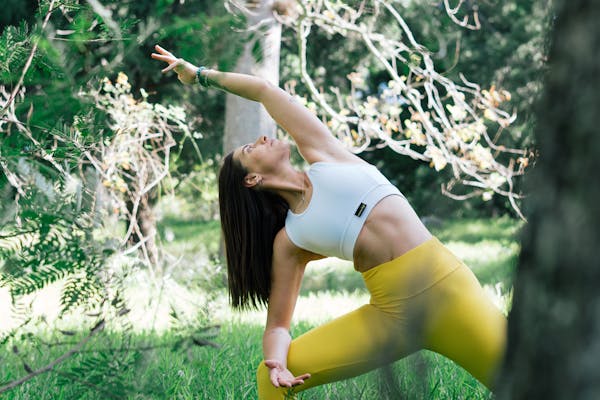Understanding Stress and its Impact
Stress has become an undeniable part of modern life, often disrupting our mental and physical well-being. It can manifest in various ways, affecting our productivity, relationships, and overall quality of life. Amid this chaos, the practice of yoga emerges as a powerful tool, offering an array of poses designed specifically to alleviate stress and promote relaxation.
The Power of Yoga for Stress Management
Yoga, an ancient practice originating from India, has gained global recognition for its holistic approach to health. Its effectiveness in managing stress lies in its ability to combine physical postures (asanas), breathing techniques (pranayama), and meditation. These elements work synergistically to calm the mind, relax the body, and release tension accumulated from daily stressors.
Key Benefits of Yoga for Stress Relief
Physical Relaxation: Yoga poses are structured to release muscle tension, promoting physical relaxation that counteracts the effects of stress on the body.
Mindful Breathing: Controlled breathing techniques in yoga help regulate the nervous system, inducing a state of calmness and reducing stress hormone levels.
Emotional Balance: The meditative aspects of yoga foster mindfulness, enhancing emotional resilience and offering a sense of tranquility.
Improved Sleep: Regular practice of yoga has shown to improve sleep quality, an essential component in stress reduction and overall well-being.
Top Yoga Poses for Stress Relief
1. Child's Pose (Balasana)
Balasana, commonly known as Child's Pose, is a gentle resting posture that stretches the lower back, hips, thighs, and ankles. It promotes a sense of calmness by allowing the breath to deepen, encouraging relaxation in the body and mind.
2. Corpse Pose (Savasana)
Savasana, also referred to as Corpse Pose, focuses on complete relaxation. It involves lying flat on the back, consciously releasing tension from every part of the body, and allowing the mind to enter a state of deep relaxation.
3. Cat-Cow Pose (Marjaryasana-Bitilasana)
The Cat-Cow Pose is a gentle flow between two poses that syncs movement with breath. It helps release tension in the spine, massages the organs, and creates a rhythmic flow that calms the mind.
4. Standing Forward Bend (Uttanasana)
Uttanasana involves a forward bend that stretches the entire back of the body, releasing tension in the spine, shoulders, and neck. The pose encourages blood flow to the brain, inducing a calming effect.
5. Legs-Up-the-Wall Pose (Viparita Karani)
Viparita Karani is a restorative pose that involves lying on the back with legs resting vertically against a wall. This pose promotes relaxation by reversing the blood flow and calming the nervous system.
Integrating Yoga into Daily Life
Incorporating these yoga poses into a daily routine can significantly reduce stress levels. Consistency is key; allocating even a few minutes each day to practice these poses can yield noticeable benefits.
Tips for Effective Practice
Consistency: Dedicate a specific time each day for yoga practice, even if it's just for a few minutes.
Mindfulness: Focus on the breath and sensations within the body while performing each pose.
Gradual Progression: Start with gentle poses and gradually incorporate more advanced ones as comfort and flexibility increase.
Seek Guidance: Consider joining yoga classes or using reputable online resources for proper guidance and alignment.
Conclusion
Yoga serves as a beacon of hope in the realm of stress management, offering a multitude of benefits that extend beyond the physical realm. By integrating these yoga poses into your daily routine and embracing the holistic approach it offers, you pave the way toward a more serene and stress-free life.
This comprehensive guide provides insights into the transformative power of yoga in alleviating stress. Each pose detailed here serves as a cornerstone in creating a balanced and harmonious lifestyle.
